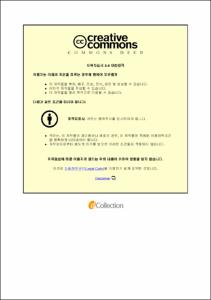Optimization and Characterization of Bioactive Components from Saccharina japonica using High Pressure Separation Technologies
- Alternative Title
- 고압분리공정을 이용한 다시마로부터 유용물질의 추출공정 최적화 및 생리활성
- Abstract
- 가장 대중적으로 이용되고 있는 다시마는 가래제거 혹은 감소, 체중감소를 위한 일반적인 치료제로 천 년에 걸쳐 사용되어져 온 해양생물이다. 다시마는 생물학적 기능소재가 풍부하며, 이로 인해 많은 연구들이 푸코잔틴과 푸코이단이 항염증, 항바이러스, 항응고제, 항암, 항산화와 항 동맥경화와 같은 광범위한 약리학적 특성을 나타내는 것이라고 검증하였다. 본 연구에서는 이러한 가치 있는 소재를 추출하기 위하여 녹색기술공정(Green technology)이 사용되었다.
첫 번째 연구에서 다시마로부터 총 카로티노이드, 푸코잔틴, 플로로탄닌을 추출하기 위해 초임계 이산화탄소(supercritical carbon dioxide, SC-CO2)와 보조용매로 해바라기씨유, 대두유, 카놀라유, 에탄올과 물을 사용하였다. 최적의 추출조건을 확인하기 위해 반응표면방법론(Response surface methodology)을 이용하였으며, 이를 통해 얻은 조건 (온도 [45–55°C]와 압력 [200–300 bar] 그리고 보조용매의 유속[0.50–2.00 (% of CO2, w/w)])을 이용한 최급상승법 (steepest ascent method)은 추출 수율을 향상시키기 위한 최상의 보조용매량을 결정하기 위해 사용되었다. 총 카로티노이드와 푸코잔틴의 추출 최적 조건은 50.62℃, 300 bar, 보조용매(해바라기씨유) 2.00%으로 확인되었으며, 플로로탄닌의 최적조건은 48.98℃, 300 bar, 보조용매(물) 2.00%으로 확인되었다. 추출 곡선은 최적화된 조건에 대해 추출곡선을 확인하였으며, 실험데이터는 유동적 변수를 평가하는데 사용되었다. 해바라기씨유를 보조용매로 사용한 경우, SC-CO2만 사용하였을 때 보다 높은 지방산 함량 및 항산화능 그리고 오일 안정성을 보였다.
두 번째 연구에서는 다시마를 180-420℃의 온도와 13-520 bar의 압력 범위에서 가압열수추출(Pressurized hot water extraction, PHWE)로 처리하고, 수득한 가수분해물에 대해 수율, 총 유기탄소(TOC), pH, Maillard 반응 생성물, 점도, 색도, 아미노산, 미네랄 그리고 단당류 함량을 조사하였다. 추출 수율은 온도와 비례하게 증가했으며, 72.21%에서 98.91%까지 다양하게 나타났다. 온도의 증가와 함께 총 유기탄소량과 pH, 칼륨 및 나트륨함량은 증가하였으나, 점도는 감소하였다. 발린과 라이신과 같은 필수아미노산과 아스팜산, 글루탐산, 글리신과 시로신과 같은 비 필수아미노산은 낮은 온도에서 더욱 많이 회수되었고, 비소, 카드뮴, 수은, 납과 같은 중금속의 함량은 매우 적은 함량을 보였다. 전체 아미노산은180℃/13bar의 조건에서 최대치(761.95 ± 14.54 mg/g)를 보였으며, 글루코즈(6.70 g/L), 프락토즈(8.40 g/L)와 만니톨(17.50 g/L)과 같은 주요 단당류의 함량 또한 동일한 조건에서 매우 높게 발견되었다. 이 결과는 다시마의 가압열수추출은 발효산업에서의 사용될 수 있는 긍정적인 가능성과 식량으로써 사용될 수 있음을 보여주었다.
세 번째 연구에서는 가압액체추출(Pressurized liquid extraction, PLE)을 이용하여 다시마로부터 푸코이단(fucoidan)을 추출하였다. 다양한 온도(80-200℃), 압력(5-100 bar), 및 용매(물, 0.1%수산화나트륨, 0.1% 포름산, 70% 에탄올, 50% 에탄올, 그리고 25% 에탄올)의 조건에서 수득한 푸코이단의 특성을 가늠하였다. 푸코이단의 최고 수율은 8.23%로, 0.1% 수산화나트륨을 용매로 사용하였을 때140℃, 50bar의 조건에서 나타났다. 조성분석, FT-IR, 분자량, 단당류, TGA, UV-Vis, XRD 그리고 원소분석을 통해 추출된 다당류가 푸코이단의 특징을 나타내는 것을 확인하였다. 푸코즈(Fucose)는 다양한 용매에서 얻어진 푸코이단에 있는 주요 단당류이다. 다양한 용매로부터 수득한 푸코이단은 항산화, 세포분열저지, 항암활성을 보였다. 이 연구는 가압액체추출이 다시마의 다당류의 추출 수율을 향상시키기 위한 효과적인 방법이며, 그것은 천연 항산화제와 항암제로써 이용될 가능성이 있음을 입증한다.
- Issued Date
- 2017
- Awarded Date
- 2017. 2
- Type
- Dissertation
- Publisher
- 부경대학교 대학원
- Affiliation
- 부경대학교 대학원
- Department
- 대학원 식품공학과
- Advisor
- 전병수
- Table Of Contents
- Chapter 1 1
General Introduction 1
1.1. Background of Seaweed 1
1.2. Seaweed production and value worldwide 2
1.3. Saccharina japonica 5
1.3.1. The biology and classification of the kelp Saccharina japonica 5
1.3.2. Global production of S. japonica 11
1.4. Fatty acids 13
1.5. Fucoxanthin 16
1.6. Phlorotannin 20
1.7. Fucoidan 23
1.8. Supercritical fluid technology 28
1.9. Subcritical water 36
1.10. Pressurized liquid extraction 42
1.11. Objectives of the thesis 45
1.12. References 46
Chapter 2 62
Influence of co-solvents on fucoxanthin and phlorotannin recovery from brown seaweed using supercritical CO2 62
2.1. Introduction 62
2.2. Materials and methods 64
2.2.1. Supercritical carbon dioxide extraction 65
2.2.2. Total carotenoid 65
2.2.3. Fucoxanthin analysis 67
2.2.4. Quantification of phlorotannin 67
2.2.5. Fatty acid composition analysis 68
2.2.6. Determination of antioxidant activity 68
2.2.7. Oxidation stability 69
2.2.8. Physical properties of oil 70
2.2.9. Experimental design 70
2.2.10. Kinetic model validation for extraction yield 73
2.3. Results and discussion 74
2.3.1. Effects of co-solvents on the yield of various key compounds 74
2.3.2. Optimization, statistical model, and analysis of response surface 77
2.3.3. Measurement of FA composition 82
2.3.4. Antioxidant activities 82
2.3.5. Oil stability: Acid value, peroxide value, and Rancimat 84
2.3.6. Physical properties 87
2.3.7. Extraction kinetics for the optimized conditions 91
2.4. Conclusion 94
2.5. References 95
Chapter 3 100
Evaluation of the chemical composition of brown seaweed (Saccharina japonica) hydrolysate by pressurized hot water extraction 100
3.1. Introduction 100
3.2. Materials and methods 103
3.2.1. Pressurized hot water extraction 104
3.2.2. Extraction yield 104
3.2.3. Analysis of total organic carbon and milliard reaction products 106
3.2.4. Physical properties: Viscosity, color and pH 106
3.2.5. Chemical composition 107
3.2.6. Statistical analysis 109
3.3. Results and discussion 109
3.3.1. Extraction yield 109
3.3.2. Total organic carbon, milliard reaction products and pH 111
3.3.3. Physical properties of seaweed hydrolysate 115
3.3.4. Chemical composition of seaweed hydrolysate from various conditions 116
3.4. Conclusion 128
3.5. References 129
Chapter 4 136
Structural, antioxidant, and biological activities of fucoidan from Saccharina japonica using pressurized liquid extraction 136
4.1. Introduction 136
4.2. Materials and methods 138
4.2.1. Extraction of fucoidan 139
4.2.2. Chemical composition 140
4.2.3. Screening of fucoidan content 141
4.2.4. Determination of monosaccharide composition 141
4.2.5. Determination of average molecular weight 142
4.2.6. Characterization of crude fucoidan 142
4.2.7. Biological activities: Antioxidant, antimitotic and anticancer activity 143
4.2.8. Statistical analyses 146
4.3. Results and discussion 146
4.3.1. Effect of temperature, pressure and solvents on the yields 146
4.3.2. Chemical composition of crude fuciodan 147
4.3.3. Monosaccharides and molecular weight 151
4.3.4. Characterization of crude fuoidan 153
4.3.6. Biological activities of crude fucoidan 157
4.4. Conclusions 169
4.5. References 170
Summary 177
Abstract (In Korean) 178
Acknowledgements 181
- Degree
- Doctor
- Files in This Item:
-
-
Download
 Optimization and Characterization of Bioactive Components from Saccharina japonica using High Pressu.pdf
기타 데이터 / 3.31 MB / Adobe PDF
Optimization and Characterization of Bioactive Components from Saccharina japonica using High Pressu.pdf
기타 데이터 / 3.31 MB / Adobe PDF
-
Items in Repository are protected by copyright, with all rights reserved, unless otherwise indicated.